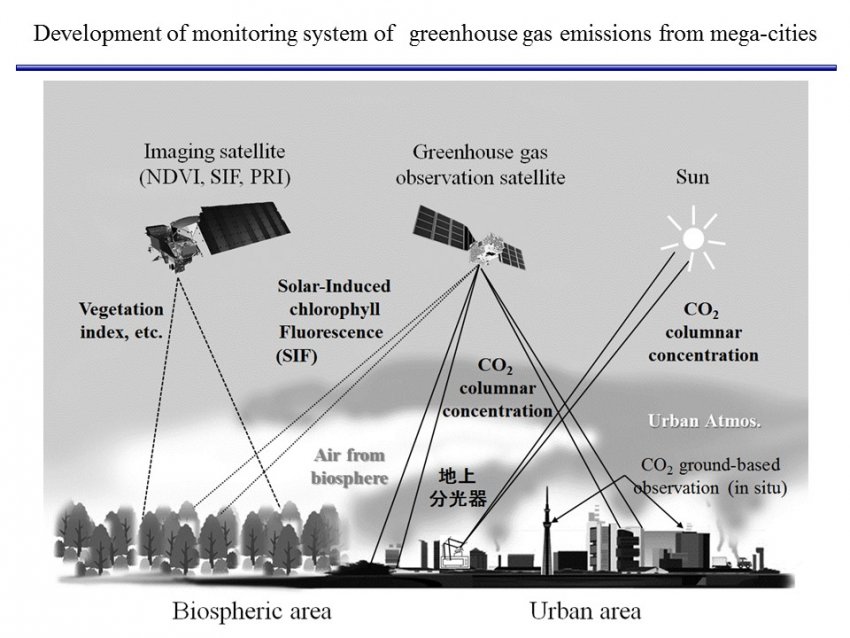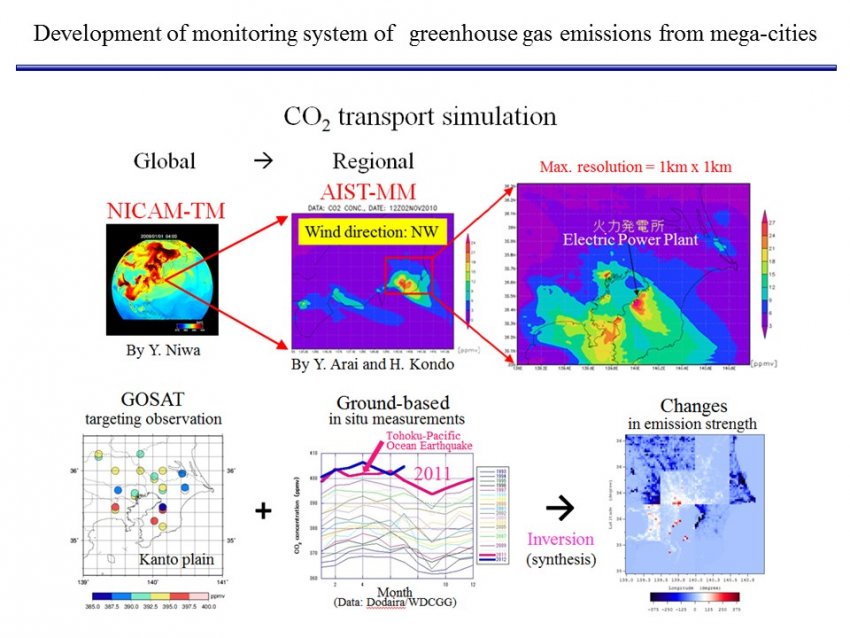Development of Monitoring System of Greenhouse Gas Emissions from Mega-cities


Ryoichi Imasu
Atmosphere and Ocean Research Institute
Professor
A data assimilation system for monitoring greenhouse gas emissions from mega-cities has been developed by using observation data from greenhouse gas observation satellites and ground remote sensing as input. By applying this method to mega-cities in industrialized countries, greenhouse gas reduction technology can be verified. On the other hand, as developing countries have yet to establish greenhouse gas emission inventory data well, we are trying to estimate the total amount of greenhouse gas emissions from major cities in these countries. The greenhouse gas observation satellites to be used for this study are GOSAT and GOSAT-2, which are joint missions of the Ministry of the Environment (MOE), the Japan Aerospace Exploration Agency (JAXA), the National Institute for Environmental Studies (NIES). These activities are carried out as collaborative research with universities and national laboratories both in Japan and overseas. Currently, we are focused on greenhouse gas emissions from Tokyo, India’s New Delhi, Mongolia’s Ulan Bator, through collaboration with countries concerned.
Research collaborators
- Ministry of the Environment
- National Institute for Environmental Studies
- National Institute of Advanced Industrial Science and Technology
- Nagoya University
- Center of Environmental Remote Sensing, Chiba University
- Delhi University, India
- Ural Federal University, Russia
- National Institute for Environmental Studies
- National Institute of Advanced Industrial Science and Technology
- Nagoya University
- Center of Environmental Remote Sensing, Chiba University
- Delhi University, India
- Ural Federal University, Russia
Related publications
- Niwa, Y., H. Tomita, M. Satoh, R. Imasu, Y. Sawa, K. Tsuboi, H. Matsueda, T. Machida, M. Sasakawa, B. Belan, and N. Saigusa, A 4D-Var inversion system based on the icosahedral grid model (NICAM-TM 4D-Var v1.0): 1. Off-line forward and adjoint transport models, Geosci. Model Devel., Geosci. Model Dev., 10, 1157-1174, doi:10.5194/gmd-10-1157-2017, 2017.
- Saitoh, N., S. Kimoto, R. Sugimura, R. Imasu, K. Shiomi, A. Kuze, Y. Niwa, T. Machida, Y. Sawa, and H. MatsuedaN., Atmos. Meas. Tech., 10, doi:10.5194/amt-2017-111, 2017.
- Nakajima, T., R. Imasu, et al., Development of seamless chemical assimilation system and its application for atmospheric environmental materials, J. Japan Soc. Sim. Tech., 34, 1-11, 2015.
- Imasu, R., Y. Hayashi, A. Inagoya, N. Saitoh, K. Shiomi, Retrieval of minor constituents from thermal infrared spectra observed by GOSAT TANSO-FTS sensor, SPIE, 7857, doi: 10.1117/12.870684, 2010.
- Saitoh, N., S. Kimoto, R. Sugimura, R. Imasu, K. Shiomi, A. Kuze, Y. Niwa, T. Machida, Y. Sawa, and H. MatsuedaN., Atmos. Meas. Tech., 10, doi:10.5194/amt-2017-111, 2017.
- Nakajima, T., R. Imasu, et al., Development of seamless chemical assimilation system and its application for atmospheric environmental materials, J. Japan Soc. Sim. Tech., 34, 1-11, 2015.
- Imasu, R., Y. Hayashi, A. Inagoya, N. Saitoh, K. Shiomi, Retrieval of minor constituents from thermal infrared spectra observed by GOSAT TANSO-FTS sensor, SPIE, 7857, doi: 10.1117/12.870684, 2010.











